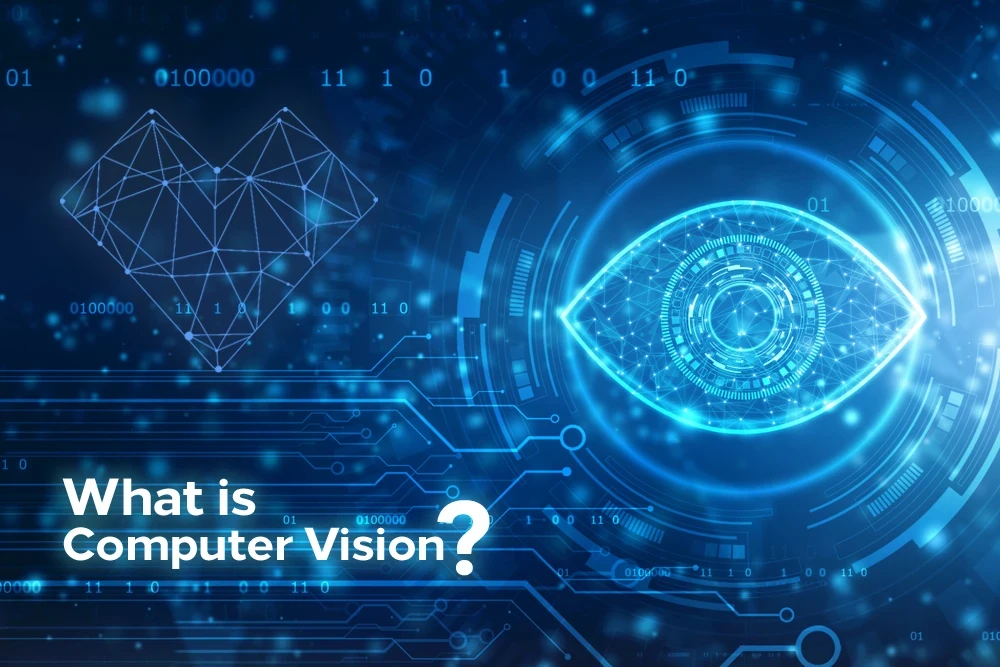Exploring the Marvels of Computer Vision AI: A Comprehensive Overview

Introduction
In today’s rapidly evolving technological landscape, Artificial Intelligence (AI) has emerged as a groundbreaking field, transforming industries and reshaping the way we interact with machines.
One of the most captivating branches of AI is Computer Vision, which enables machines to interpret and understand visual information from the world around us. In this blog, we will delve deep into the realm of Computer Vision AI, exploring its applications, underlying technologies, challenges, and potential future developments.
Understanding Computer Vision AI
Computer Vision AI is the art and science of endowing computers with the ability to interpret visual data, just as humans do. It involves the development of algorithms and models that empower machines to identify and process images and videos, enabling them to perform tasks such as object detection, image classification, facial recognition, and even generating visual content.
Applications of Computer Vision AI
1. **Healthcare**: Computer Vision AI has revolutionized medical imaging, aiding in early disease detection through techniques like MRI and CT scan analysis. It assists radiologists in identifying anomalies, enabling more accurate diagnoses and treatment plans.
2. **Automotive Industry**: Self-driving cars heavily rely on computer vision to perceive their surroundings. This technology enables them to detect pedestrians, recognize traffic signs, and navigate through complex traffic scenarios.
3. **Retail and E-Commerce**: Computer Vision AI enhances the shopping experience by enabling virtual try-ons, visual search, and inventory management. It allows customers to visualize products in their real environment before making a purchase.
4. **Security and Surveillance**: Facial recognition powered by Computer Vision AI is employed in security systems to identify individuals and enhance public safety. It can be used for access control, criminal identification, and tracking suspicious activities.
5. **Entertainment and Gaming**: Video games and augmented reality applications use computer vision to create interactive and immersive experiences. Players can engage with virtual elements as if they were part of the real world.
6. **Agriculture**: Computer Vision AI aids in crop monitoring, disease detection, and yield prediction. Drones equipped with computer vision technology can survey large agricultural fields efficiently.
Key Technologies in Computer Vision AI
1. **Image Processing**: Fundamental image processing techniques, such as filtering, edge detection, and image enhancement, form the basis of Computer Vision AI. These techniques preprocess visual data before feeding it into AI models.
2. **Deep Learning**: Convolutional Neural Networks (CNNs) are at the heart of many computer vision applications. These deep learning architectures can automatically learn and extract features from images, enabling tasks like object recognition and segmentation.
3. **Object Detection and Tracking**: Computer Vision AI employs algorithms to identify and track objects within images or videos. This is crucial in applications like autonomous driving, where the car needs to identify pedestrians, vehicles, and obstacles.
4. **Feature Extraction**: Feature extraction techniques like SIFT (Scale-Invariant Feature Transform) and SURF (Speeded-Up Robust Features) enable the identification of unique and distinctive features in images, aiding in matching and recognition tasks.
Challenges and Limitations

While Computer Vision AI has achieved remarkable feats, it still faces several challenges:
1. **Data Quality and Quantity**: Training robust computer vision models requires massive amounts of high-quality labeled data. Obtaining and annotating such data can be time-consuming and expensive.
2. **Variability and Ambiguity**: Real-world images often come with variations in lighting, angle, and background. AI models must be able to generalize and handle such variability to ensure accurate results.
3. **Interpretable AI**: As AI systems become more complex, understanding the decisions made by computer vision models becomes challenging. Interpretable AI techniques are being developed to shed light on model reasoning.
4. **Ethical and Privacy Concerns**: The use of facial recognition and surveillance systems powered by Computer Vision AI raises ethical and privacy concerns. Striking a balance between technological advancements and individual rights is crucial.
Future Trends and Developments
The future of Computer Vision AI holds exciting possibilities:
1. **Real-time Video Analysis**: Advancements in hardware and algorithms are making real-time video analysis more feasible. This could lead to enhanced surveillance, augmented reality applications, and improved video editing tools.
2. **Explainable AI**: Researchers are working on making AI models more transparent and explainable. This will help build trust in computer vision systems and allow users to understand the reasoning behind AI-generated decisions.
3. **Combination with Other AI Fields**: Computer Vision AI could be integrated with natural language processing and robotics to create more comprehensive AI systems that can understand and interact with the world in a more human-like manner.
4. **AI-generated Content**: Computer Vision AI might play a significant role in generating realistic visual content, including images, videos, and even virtual environments.
Revolutionizing Healthcare
One of the most remarkable ways computer vision AI has left a natural impact on human life is in the field of healthcare. Medical professionals now rely on AI-powered diagnostic tools that can accurately detect diseases and conditions from medical images. For instance, radiologists use AI algorithms to analyze X-rays, MRIs, and CT scans, leading to faster and more precise diagnoses. Early detection facilitated by computer vision AI has not only saved countless lives but has also alleviated the burden on healthcare systems worldwide.
Assisting the Visually Impaired
Computer vision AI is not just transforming industries; it’s also making a profound impact on the lives of individuals with visual impairments. Through advancements in object recognition and scene understanding, AI-powered devices can provide real-time descriptions of the surrounding environment to users. This technology empowers the visually impaired by enhancing their independence and enabling them to navigate the world with greater confidence.
Automating Industries
Industries like manufacturing, agriculture, and logistics have experienced a natural transformation with the integration of computer vision AI. In manufacturing, AI-driven quality control systems can identify defects in products with unparalleled accuracy and speed. Farms are implementing AI-equipped drones and cameras to monitor crop health and optimize yield. Furthermore, logistics companies are utilizing computer vision AI to streamline warehouse operations and enhance package sorting processes. These applications not only boost efficiency but also minimize errors and reduce operational costs.
Enhancing Transportation and Safety
Computer vision AI is playing a pivotal role in shaping the future of transportation. Self-driving cars equipped with AI-powered vision systems can perceive their surroundings, make split-second decisions, and navigate complex road scenarios. This technology has the potential to drastically reduce accidents caused by human error and create safer roadways for all. Additionally, surveillance systems powered by computer vision AI contribute to enhanced public safety by identifying potential security threats and monitoring public spaces.
Personalizing User Experiences
The integration of computer vision AI into our devices has led to personalized and immersive user experiences. Social media platforms use facial recognition algorithms to automatically tag users in photos, while e-commerce websites recommend products based on users’ browsing and purchase history. Virtual and augmented reality applications leverage computer vision AI to create interactive and lifelike environments, fundamentally changing the way we consume entertainment and interact with digital content.
Challenges and Ethical Considerations
While the natural impact of computer vision AI on human life is undeniably transformative, it also raises important challenges and ethical considerations. Privacy concerns surrounding the collection and use of visual data have sparked debates about the responsible implementation of these technologies. Ensuring transparency, data security, and unbiased algorithms are crucial to harnessing the full potential of computer vision AI without compromising individual rights and societal values.
The Future Landscape
As computer vision AI continues to advance, its impact on human life is poised to deepen further. The fusion of computer vision with other AI domains like natural language processing and robotics holds the promise of creating even more sophisticated and integrated systems. From healthcare to education, from entertainment to urban planning, the applications of computer vision AI are virtually limitless, and its ongoing evolution will shape the future in ways we are only beginning to comprehend.
Conclusion

Computer Vision AI stands as a testament to the remarkable achievements of AI technology. Its applications span across diverse industries, enriching our lives and driving innovation. As we continue to overcome challenges and push the boundaries of what is possible, the future promises a world where machines can not only see but also comprehend and interpret the visual marvels that surround us.
Computer vision AI has seamlessly woven itself into the fabric of our lives, creating a natural and profound impact on humanity. Its ability to interpret and understand visual information is transforming industries, enhancing safety, and empowering individuals in ways previously unimaginable. While challenges and ethical considerations persist, the potential for positive change through computer vision AI is boundless.
As we continue to embrace and responsibly develop this technology, we pave the way for a future where the lines between the physical and digital worlds are beautifully blurred, enriching our experiences and improving our lives.
https://healthcareguru.services/natural-language-processing/
https://healthcareguru.services/artificial-intelligence-at-google/

